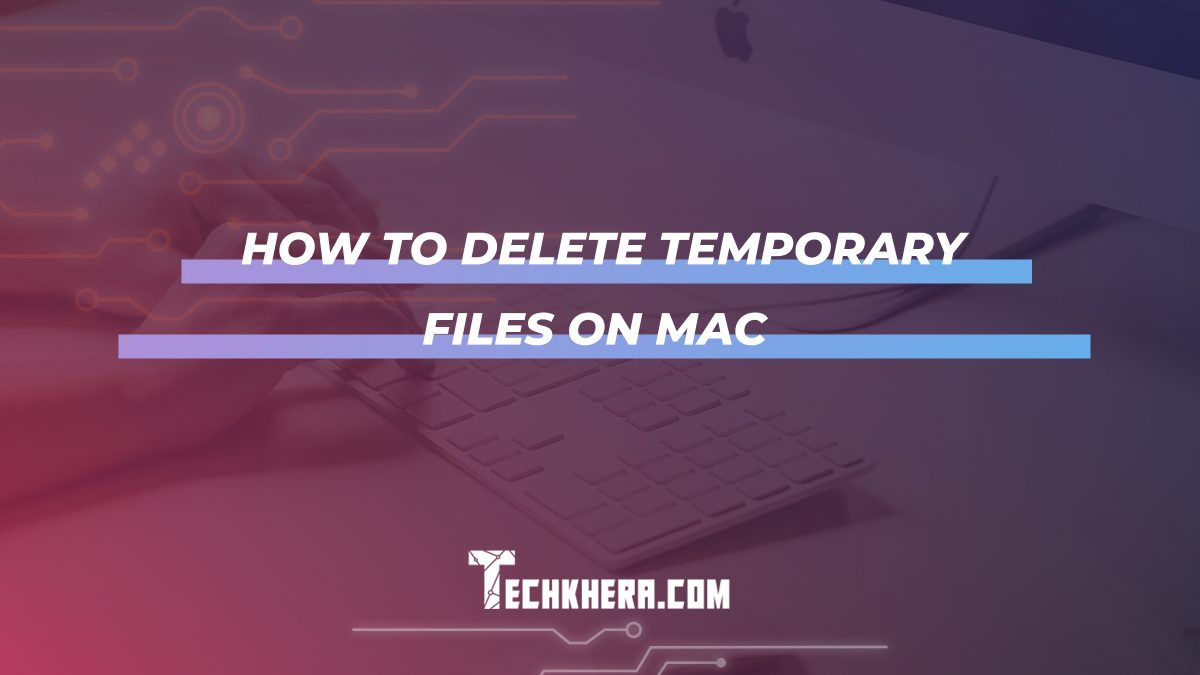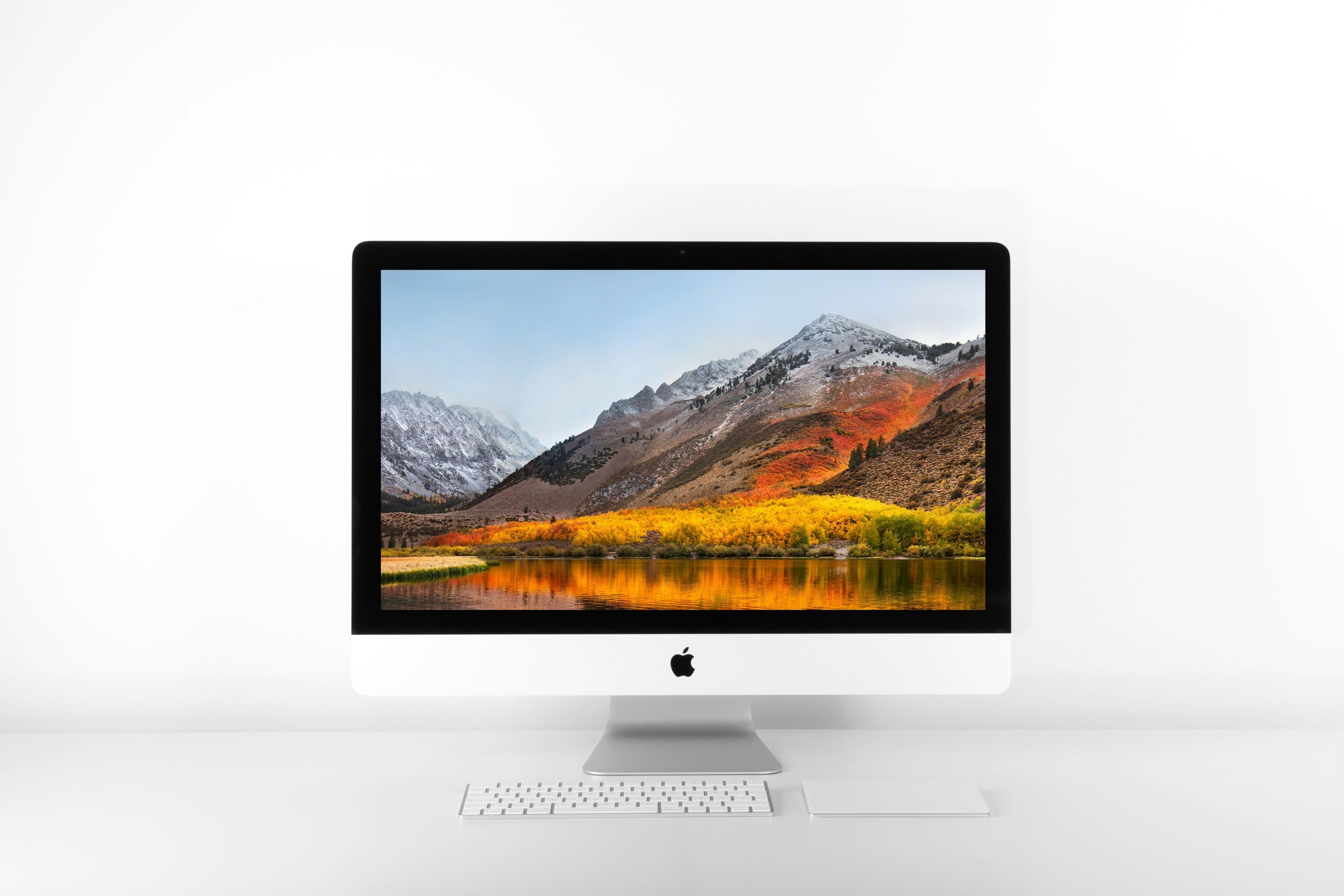
How to Delete Temporary Files on Mac
In the ever-evolving world of technology, our beloved Mac computers can sometimes accumulate clutter in the form of temporary files that hog precious disk space. These elusive files lurk in the shadows, clogging up your system and slowing down performance without you even realizing it. But fear not, for there is a way to reclaim your Mac’s speed and efficiency! In this comprehensive guide, we will delve into the realm of temporary files – what they are, why they exist, and most importantly, how to banish them from your Mac for good. By following our step-by-step instructions and expert tips, you’ll soon be on your way to a cleaner, faster Mac experience that will leave you wondering why you hadn’t tackled this issue sooner. So grab your virtual broom and get ready to sweep away those pesky temporary files with ease!
Contents
- 1 Understanding the importance of deleting temporary files
- 2 Why Delete Temporary Files: Benefits of clearing space
- 3 How to Locate Temporary Files: Finding cluttered areas
- 4 Manual Deletion Methods: Step-by-step instructions for removal
- 5 Automating the Process: Using tools for efficiency
- 6 Best Practices for Maintenance: Regular clean-up tips
- 7 Conclusion: Enjoy a cleaner and faster Mac
Understanding the importance of deleting temporary files
Have you ever stopped to consider the impact of all those temporary files cluttering up your Mac? These seemingly insignificant files may be small in size, but when accumulated over time, they can significantly slow down your device’s performance. Deleting temporary files is not just about freeing up storage space; it’s about optimizing your Mac’s efficiency and maintaining its overall health. By regularly clearing out these unnecessary files, you can improve system speed, prevent crashes, and enhance the longevity of your device.
Furthermore, deleting temporary files contributes to better security for your Mac. These files often contain sensitive information or data from various applications that could potentially be exploited by cyber threats. By removing them regularly, you reduce the risk of potential security breaches and protect your personal information from falling into the wrong hands. So, next time you overlook those tiny temporary files lingering on your Mac desktop or hidden deep within folders, remember their significance in keeping your device running smoothly and securely.

Why Delete Temporary Files: Benefits of clearing space
Deleting temporary files from your Mac might seem like a simple task, but the benefits go beyond just freeing up space. By removing these files, you can improve your system’s performance and speed, allowing it to function more efficiently. Temporary files can accumulate over time and take up valuable storage space, causing your Mac to slow down. Additionally, clearing out temporary files can help prevent potential issues such as crashes or errors that may occur due to cluttered storage.
Furthermore, deleting temporary files contributes to better organization and helps you stay on top of managing your Mac’s storage effectively. It gives you a clean slate to work with and ensures that unnecessary data is not clogging up your system. This process also aids in maintaining the overall health of your Mac by reducing the risk of file corruption or conflicts between different applications. In essence, regularly cleaning out temporary files is a proactive step towards optimizing your Mac’s performance and ensuring a smoother user experience in the long run.
How to Locate Temporary Files: Finding cluttered areas
One common cluttered area where temporary files tend to accumulate on a Mac is in the system’s cache folders. These folders store files that help optimize the performance of applications, but they can also take up valuable storage space over time. To locate these cache folders, navigate to the Library folder in your user directory and look for subfolders named Caches or specific app names.
Additionally, another overlooked spot for temporary files is the Downloads folder. Files downloaded from emails, the internet, or messaging apps often end up here and may not always be necessary to keep. Taking a regular sweep through this folder can free up significant storage space and help declutter your Mac efficiently. Remember to sort by date or file type when cleaning out your Downloads folder for quick and effective organization.

Manual Deletion Methods: Step-by-step instructions for removal
Have you ever found yourself running out of storage space on your Mac and wondering how to efficiently delete temporary files? Fear not, as we have compiled a comprehensive guide on manual deletion methods to help you reclaim that valuable disk space. Remember, removing these temporary files is not only about freeing up storage but also about optimizing your Mac’s performance.
The first step in this manual deletion process is identifying the types of files that are safe to remove without causing any harm to your system. Temporary internet files, cache files, and junk folders are usually good candidates for deletion. Once you have pinpointed these items, proceed with caution and ensure you take backups of any important data before starting the removal process. Utilize tools like Disk Utility or Terminal commands to navigate through directories and effectively eliminate these unnecessary files from your system.
Implementing manual deletion methods not only helps tidy up your Mac but can also enhance its speed and overall efficiency. By following our step-by-step instructions for removal, you can enjoy a smoother computing experience while keeping your system well-organized and clutter-free. So roll up your sleeves, dive into those directories, and bid farewell to those pesky temporary files slowing down your Mac!

Automating the Process: Using tools for efficiency
Automating the process of deleting temporary files on Mac can significantly increase efficiency and save you valuable time. By utilizing tools such as CleanMyMac or Disk Drill, you can quickly identify and remove unnecessary files that are taking up precious space on your computer. These tools not only streamline the cleaning process but also provide detailed insights into which files are safe to delete, ensuring that important data is protected.
Automation allows for a more systematic approach to file maintenance, reducing the risk of accidentally deleting important documents while decluttering your system. Additionally, scheduling regular clean-ups with these tools can help maintain optimal performance and prevent any potential slowdowns caused by a buildup of temporary files. Embracing automation in this aspect of Mac maintenance will not only improve efficiency but also contribute to a smoother operating experience overall.
Best Practices for Maintenance: Regular clean-up tips
Regular clean-up is essential to maintain the optimal performance of your Mac. To start, focus on clearing out temporary files which can accumulate over time and slow down your system. Utilize built-in tools like Disk Utility to locate and delete these files efficiently. Additionally, consider using third-party apps such as CleanMyMac or CCleaner for a more thorough clean-up. Remember to also tidy up your desktop by organizing files into folders and removing any unnecessary items that could clutter your workspace.
Another important aspect of maintenance is regularly emptying your trash bin to free up storage space. This simple step can help improve the overall speed and efficiency of your Mac. Create a routine schedule for cleaning up your system, whether it’s weekly or monthly, to ensure that you stay on top of maintenance tasks. By incorporating these best practices into your regular clean-up routine, you can help prolong the lifespan of your Mac and keep it running smoothly for years to come.

Conclusion: Enjoy a cleaner and faster Mac
In conclusion, keeping your Mac clean and optimized is essential for ensuring its speed and performance. By regularly deleting temporary files and other clutter, you can enjoy a smoother computing experience with faster response times. Not only does this practice free up valuable storage space, but it also helps prevent potential issues like system crashes or slow running applications.
Embracing a proactive approach to managing temporary files on your Mac can significantly enhance its overall efficiency. By incorporating regular maintenance habits such as clearing cache files and removing unnecessary downloads, you can prolong your device’s lifespan and maximize its productivity. Remember, a cleaner Mac not only improves performance but also contributes to a more enjoyable user experience as you navigate through various tasks seamlessly.
